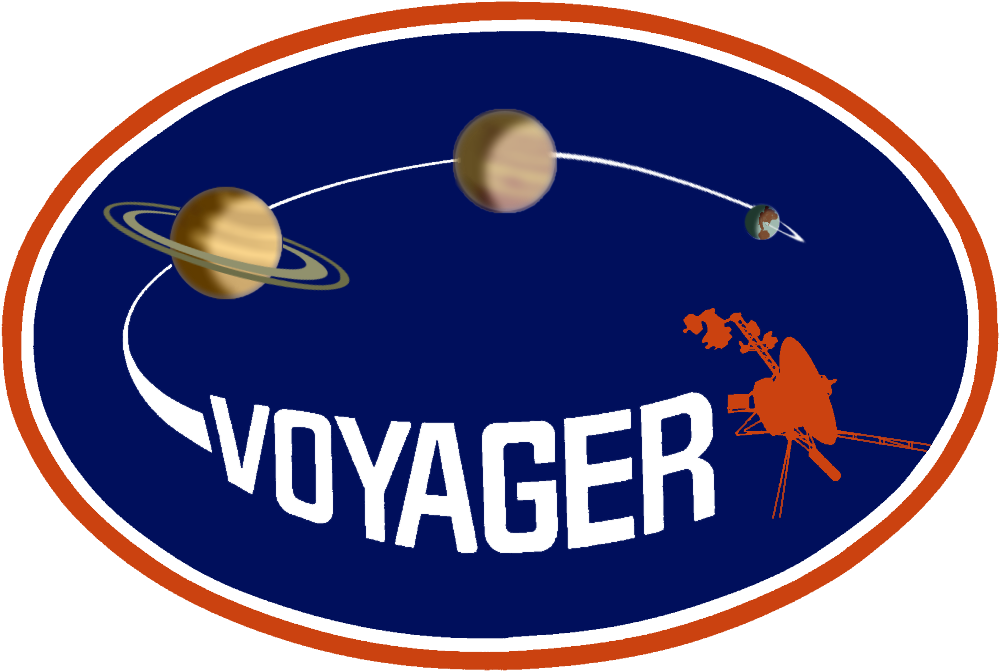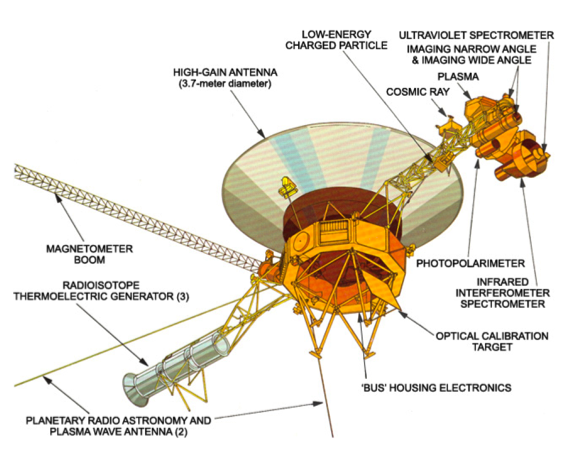
The Planetary Radio Astronomy Instrument Description
The PRA instrument consisted of two superheterodyne receivers, one for the range from 1326.0 to 1.2 kHz (center frequency) and a second for the range 40.55 to 1.53 MHz (center frequency). The channels are numbered so that the lowest frequency channel (1.2 kHz) is channel number 198. Channels in the range 1 to 128 are referred to as 'high band', and the remaining channels as 'low band'. In low band, the channel spacing is 19.2 kHz. In high band, the channel spacing is 307.2 kHz. The PRA receiver is driven by two orthogonal antennas mounted on the spacecraft body. Each antenna element is made of BeCu hollow tubes 0.5 inches in diameter and is 10 meters in length. By combining the signals from the two antennas in a 90 degree hybrid, the PRA instrument can distinguish between the opposing states, left hand and right hand, of circular polarization of an incoming wave.
PRA Objectives
The primary objective was to locate and explain kilometric, hectometric, and decametric radio emissions from the planets; to measure plasma resonances near the giant planets; and to detect lightning on the giant planets. The instrument was also successful at observing solar radio emissions from the perspective of the outer solar system. Radio emissions can be used to determine the rate of rotation of the inner core of a planet, to determine the existence of a magnetic field, and to search for magnetic anomalies. Radio emissions are often the only remote diagnostic for interactions occurring in the portions of magnetospheres through which a spacecraft does not pass. This is particularly true for the inner magnetosphere, which usually goes unsampled.
References Helpful in Scoping the Mission
Mission Description
Spacecraft Description
Spacecraft Description
The PRA Data
Instrument Description - Also see Space Science Reviews 21 (1977-Issue 3) 309-327.
The Data are located at the PDS/PPI node.
The Data are located at the PDS/PPI node.
Publications - A listing of team members to facilitate literature searches.
 PDS: The Planetary Atmospheres Node
PDS: The Planetary Atmospheres Node


